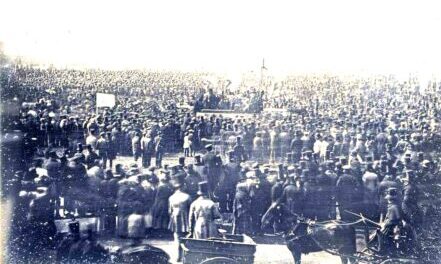
The Chartist Movement
The 1832 Reform Act was a small step towards equal rights, such as they were then perceived, but the oppressed working classes wanted more. Against a background of revolution in Europe, British activists held peaceful rallies and sent a People’s Charter to Parliament, hence the name of the ‘Chartist Movement‘, formed in 1838.
Parliament reacted with outrage and heavy-handedness, sending armed forces to harass and even shoot demonstrators. Nevertheless, three petitions were submitted, in 1839, 1842 and 1848, each of which was rejected even though they had millions of signatures. Their demands, and the years they were eventually met, were:-
- All men aged 21+ to have the vote: 1918.
- Voting to be by secret ballot: 1872.
- Members of Parliament (MPs) no longer required to be property/land owners: 1858.
- MPs to be paid: 1911.
- Constituencies to have similar numbers of eligible voters: 1885.
- MP elections to be held annually: not yet ~ on the contrary, the term has been increased to 5 years!
The Chartist campaign ceased in 1858 having seen the passing of, for example, the Mines & Collieries Act (1842) and the Factories Act (1847), easing working conditions for women and children, and the repeal of the Corn Laws (1846), reducing food costs. It had succeeded in posting notice that the people would not be downtrodden forever.
(Image of 1848 Chartist rally in London: William Kilburn via picryl.com / Public domain)
